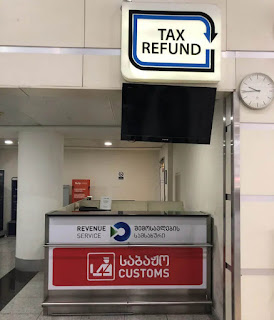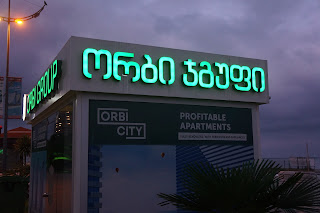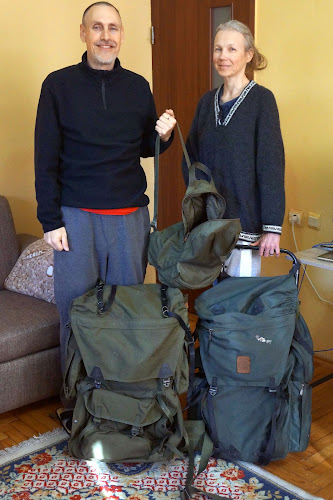Samba Carnival in Rio de Janeiro
The last day of Samba Carnival in Rio de Janeiro, Brazil. The value for money was too satisfactory and the spectacle is was over marketed.
Today is the last day of Rio Samba Carnival for us. We are not disappointed to the carnival but not too enthusiastic about it either. We discovered that the value for money was not at all satisfactory and the whole spectacle is utterly over marketed. Foreigners travel to Brazil to dance in Sambódromo with bunch of other people, but nobody can actually dance samba, not even dancers from whom coordination is seriously missing. The focus is in nice vehicles and colourful kitsch costumes made from plastic jewels. Samba in Brazil means tourist attraction. Locals flee from the city to avoid the noise and streets covered with piss, shit, and trash.
The carnival appears in two kind of forms. The one you can see in television happens in Sambódromo, which is a kind of Colosseum built for samba parades. There is about 4000-5000 "dancers" per samba school jumping around, 5-10 fancy vehicles (a real 'himmeli' in Finnish) and altogether 14 schools competing with each other. The Sambódromo is so long, that we watched the parade for 15 minutes after 45 minutes of waiting. One school was enough. They all looked the same to us, and even played the same samba tune about a thousand times during parades. We got tickets free from some people exiting the arena, so we must admit that Sambódromo had a good value for money unlike everything else in Rio. We talked with an English couple who had paid £ 80 per ticket.
The other kind of action happens on the streets. Schedules of happenings, places and quality are totally random, in the Brazilian way, and in reality there is very little amount of things going on. Most of the time streets are empty and people hang around Sambódromo. The best action was in the entrance where dancers prepared and other people drank beer watching them. In Ipanema there was a gay parade with beautiful drag queens. It was actually quite fun. In general the street bands called blocos just play loudly, horribly, and wrong, and the music comes actually from a CD. We have by now seen only one live band playing and it had no audience. Even in Sambódromo there were not many musicians.
In the first day of Carnival we went from the city centre to an ill-reputated place called Laka. We had attended a Lonely Planet back-packer meeting in a nearby bar. After drinking a few beers from street vending sites and some caipirinhas in the meeting Santeri fainted to the street. He was just wearing slippers and bermuda shorts. He fell down to street which was covered with shit and piss and got scratches to his feet. A friendly carioca (a citizen of Rio de Janeiro) helped Päivi to poor water on top of him and feed him ketchup for gaining back salt balance. That helped and we got back to our hotel alive. Next day we were better prepared. Santeri wore rubber boots, army trousers and black shirt. Everything went fine after the first night.
We stayed the five days in the famous Copacabana district. Our hotel was luxurious compared to the previous ones in Olinda and Salvador, and we especially enjoyed the great breakfast buffet and TV broadcasting James Bond films (dubbed into English).
An idea Santeri got today while drinking his morning coffee at 3pm: Democracy has proven it's failure in the US, in the leading democracy of the world. Mad populists are able to take over the power and start wars because of political and financial interests. The next step of evolution might be anarchy. It could provide a better safeguard against blood thirsty maniacs like Hitler and George W. Bush.
A haiku poem in Finnish we wrote of the carnival:
Rion sambakarnevaali
Samba ain samaa Iloista ihmismassaa Kadulla pissaa
Do you remember this? A song in Finnish telling about Copacabana:
Maria Copacabanasta 1. Pikkuinen tyttö on kyllä Maria, resuinen mekko on yllä Marian. Seudun nimi on Copacabana, Marian koti on Copacabana. 2. Siskojen katras on hänellä suuri, nukkumaan mahtuvat juuri ja juuri, mökkiin laidalla Copacabanan, Marian koti on Copacabana. 3. Leikki vielä on työtä Marian, muitten lapsien myötä Maria leikkii kujalla Copacabanan, Marian koti on Copacabana. 4. Yhtälailla on leluja vailla lapsi jokainen niillä mailla. Köyhää väki on Copacababan, Marian koti on Copacabana. 5. Ystävämme on pikku Maria. Mielellämme me kanssa Marian, leikkisimme, vaan Copacabana, kovin on kaukana Copacabana.
It seems that we have lived the Brazilian Samba Carnival and do not have to do it again. Next we head to the Dominican Republic and see hopefully as well Haiti, voodoo and real zombies.
Be happy,
Päivi & Santeri
Keywords: Brazil, Rio de Janeiro, Samba, Carnival, Carnaval, Sambódromo, spectacle, dance, Ipanema, blocos, Laka, caipirinha, Copacabana.






Comments